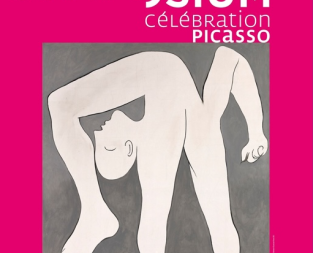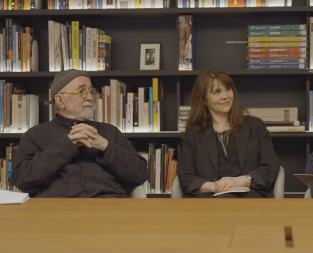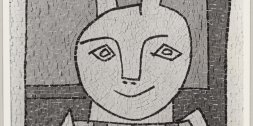Articles inédits
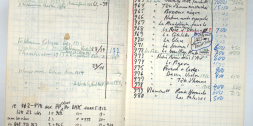 The Field Transcriptions: The Galerie Kahnweiler Stock Book (1907–late 1913) & Record of Shipments Abroad (1910–1920)Ce texte présente une analyse des transcriptions réalisées par Field du livre d'inventaire de la galerie Kahnweiler (1907-1913) et de la liste des œuvres "envoyées au dehors" (1910-1920). Il constitue une première évaluation des connaissances inédites susceptibles d’émerger de leur étude. Parmi les deux carnets originaux de Daniel-Henry Kahnweiler que John H. Field a transcrits en 1969, avec l'autorisation du marchand d'art, le livre d'inventaire de la galerie a été l'un des documents les moins accessibles de Kahnweiler, et les registres des expéditions à l'étranger n'ont jamais été analysés en détail. Aujourd'hui, les transcriptions de Field mettent en évidence les deux principales activités du commerce d'art de Kahnweiler : le soutien à un groupe de huit artistes (Georges Braque, André Derain, Kees van Dongen, Juan Gris, Fernand Léger, Manolo, Pablo Picasso et Maurice de Vlaminck) et la diffusion internationale de leur art, de 1910 jusqu'au début de la Première Guerre mondiale. En outre, elles mettent en lumière la période cruciale de 1919-1920, lorsque Kahnweiler se réinstalle comme marchand d'art. Sans prétendre à l'exhaustivité, cette analyse poursuit un double objectif : d'une part, apporter un éclairage nouveau sur une conception en apparence figée de l'activité artistique de Kahnweiler et, d'autre part, formaliser, à l'aide d'exemples concrets, les applications possibles de ce corpus dans le contexte du marché de l'art, des transferts culturels et des études de provenance.
The Field Transcriptions: The Galerie Kahnweiler Stock Book (1907–late 1913) & Record of Shipments Abroad (1910–1920)Ce texte présente une analyse des transcriptions réalisées par Field du livre d'inventaire de la galerie Kahnweiler (1907-1913) et de la liste des œuvres "envoyées au dehors" (1910-1920). Il constitue une première évaluation des connaissances inédites susceptibles d’émerger de leur étude. Parmi les deux carnets originaux de Daniel-Henry Kahnweiler que John H. Field a transcrits en 1969, avec l'autorisation du marchand d'art, le livre d'inventaire de la galerie a été l'un des documents les moins accessibles de Kahnweiler, et les registres des expéditions à l'étranger n'ont jamais été analysés en détail. Aujourd'hui, les transcriptions de Field mettent en évidence les deux principales activités du commerce d'art de Kahnweiler : le soutien à un groupe de huit artistes (Georges Braque, André Derain, Kees van Dongen, Juan Gris, Fernand Léger, Manolo, Pablo Picasso et Maurice de Vlaminck) et la diffusion internationale de leur art, de 1910 jusqu'au début de la Première Guerre mondiale. En outre, elles mettent en lumière la période cruciale de 1919-1920, lorsque Kahnweiler se réinstalle comme marchand d'art. Sans prétendre à l'exhaustivité, cette analyse poursuit un double objectif : d'une part, apporter un éclairage nouveau sur une conception en apparence figée de l'activité artistique de Kahnweiler et, d'autre part, formaliser, à l'aide d'exemples concrets, les applications possibles de ce corpus dans le contexte du marché de l'art, des transferts culturels et des études de provenance. Picasso et l'art asilaireSi le regard porté par Pablo Picasso sur certaines typologies d’œuvres que l’on rassemble au début du xxe siècle sous le terme d’« arts primitifs » a déjà pu faire l’objet de nombreux commentaires, il n’en est pas de même pour l’art asilaire, soit les œuvres et artefacts produits dans le contexte d’hôpitaux psychiatriques, entre le début des années 1900 et le lendemain de la Seconde Guerre mondiale.
Picasso et l'art asilaireSi le regard porté par Pablo Picasso sur certaines typologies d’œuvres que l’on rassemble au début du xxe siècle sous le terme d’« arts primitifs » a déjà pu faire l’objet de nombreux commentaires, il n’en est pas de même pour l’art asilaire, soit les œuvres et artefacts produits dans le contexte d’hôpitaux psychiatriques, entre le début des années 1900 et le lendemain de la Seconde Guerre mondiale.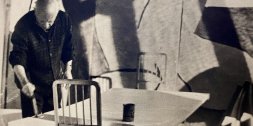 Painting for the age of béton armé : "La Chute d’Icare" and its creative processIn 1957-1958 Pablo Picasso realized the largest and highest-profile work of his whole career: a mural commissioned for the newly built headquarters of the United Nations Educational, Scientific, and Cultural Organization (UNESCO) in Paris, a painting that came to be known as "La Chute d’Icare". Given its monumental scale, the final composition was the result of a labored conception and execution that took place behind closed doors at the artist’s residence in Cannes, villa “La Californie”. This essay aims to reevaluate La Chute d’Icare, which was heavily criticized at the time for its seemingly careless stylistic features, by focusing on the relationship with its brutalist architectural setting, seen as a productive dialogue rather than a failed integration. Analyzing how this commission unfolded through previously unpublished archival materials, this essay also sheds new light on Picasso’s creative process and his approach towards working on commission. The numerous extant preparatory drawings, some of which are taken into consideration, allow us to follow the evolution of the iconography from the indoor space of the artist’s atelier, the point of departure, to the outdoor setting of the beach visible in the finished mural. Testing key issues such as the dialogue between painting and sculpture and the form to be taken by mural painting in the post–World War II era, the UNESCO commission presented Picasso with unexpected challenges.
Painting for the age of béton armé : "La Chute d’Icare" and its creative processIn 1957-1958 Pablo Picasso realized the largest and highest-profile work of his whole career: a mural commissioned for the newly built headquarters of the United Nations Educational, Scientific, and Cultural Organization (UNESCO) in Paris, a painting that came to be known as "La Chute d’Icare". Given its monumental scale, the final composition was the result of a labored conception and execution that took place behind closed doors at the artist’s residence in Cannes, villa “La Californie”. This essay aims to reevaluate La Chute d’Icare, which was heavily criticized at the time for its seemingly careless stylistic features, by focusing on the relationship with its brutalist architectural setting, seen as a productive dialogue rather than a failed integration. Analyzing how this commission unfolded through previously unpublished archival materials, this essay also sheds new light on Picasso’s creative process and his approach towards working on commission. The numerous extant preparatory drawings, some of which are taken into consideration, allow us to follow the evolution of the iconography from the indoor space of the artist’s atelier, the point of departure, to the outdoor setting of the beach visible in the finished mural. Testing key issues such as the dialogue between painting and sculpture and the form to be taken by mural painting in the post–World War II era, the UNESCO commission presented Picasso with unexpected challenges.- Inverser les regards. Envisager Picasso depuis l’Afrique et sa diasporaSi les rapports entretenus par Picasso aux arts d’Afrique ont pu faire couler beaucoup d’encre, la perception de Picasso depuis l’Afrique reste à étudier. Inscrit dans le champ d’une histoire globale et connectée, ce texte vise à décentrer l’étude de Picasso et à l’envisager depuis le continent. L’œuvre de l’artiste y est analysée depuis le Caire dans les années 1930, à Paris, dans les années 1950, autour du mouvement de la négritude et de la revue et maison d’édition Présence africaine. La question du primitivisme et du rapport à l’art contemporain est adressée depuis Harare (Zimbabwe) en 1962, à l’occasion du Festival International des Cultures Africaines, puis à Dakar (Sénégal) lors du Festival mondial des arts nègres de 1966. Nous concluons sur la perception de Picasso dans les années 1980, parmi les artistes femmes du Black Art à Londres.
- Les mosaïques de Picasso, une histoire oubliéeMalgré l’abondante littérature autour de Pablo Picasso, les mosaïques que l’artiste réalise entre 1956 et 1958 restent un pan méconnu de son œuvre. Aucun de ses biographes ou commentateurs ne mentionnent ces pièces ou le nom du collaborateur Hjalmar Boyesen (1920-1978). Le présent essai met en lumière pour la première fois cette histoire, qui nous en apprend un peu plus sur l’appétit créatif de l’artiste espagnol et nous questionne sur les raisons ayant permis un tel oubli.
 Picasso, UNESCO and The Fall of IcarusEn 1955, Picasso a reçu la commande d’une peinture murale, devant mesurer plus de 90 mètres², pour le nouveau « palais de l’UNESCO », dans le 7e arrondissement de Paris. Notre essai, en sept parties, suit à travers des documents d’archive les rapports entre Picasso et les représentants de l’UNESCO, tout en expliquant la distance qui s’est imposée entre l’artiste et le Directeur Général de l’institution, américain et anti-communiste.
Picasso, UNESCO and The Fall of IcarusEn 1955, Picasso a reçu la commande d’une peinture murale, devant mesurer plus de 90 mètres², pour le nouveau « palais de l’UNESCO », dans le 7e arrondissement de Paris. Notre essai, en sept parties, suit à travers des documents d’archive les rapports entre Picasso et les représentants de l’UNESCO, tout en expliquant la distance qui s’est imposée entre l’artiste et le Directeur Général de l’institution, américain et anti-communiste.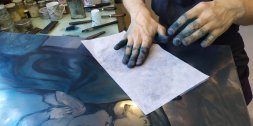 La gravure d’interprétation « Maternité » de Jacques Villon d’après PicassoDans cet article, nous présentons l’histoire de la gravure d’interprétation « Maternité » réalisée en 1930 par Jacques Villon d’après la peinture de Pablo Picasso, jusqu’à notre travail d’impression en couleur, mené à l’atelier de Chalcographie du Louvre en 2023. Nous explorons les enjeux de la reproduction de cette œuvre emblématique, à partir d’une analyse des techniques de gravure utilisées par Villon, et d’une description du processus d’expérimentation pour trouver les couleurs fidèles à l’édition originale. Le résultat de toutes ces recherches consiste en un tirage daté et numéroté, dans le respect du peintre et du graveur, préservant ainsi l’héritage artistique et technique de la gravure originale pour les générations futures.
La gravure d’interprétation « Maternité » de Jacques Villon d’après PicassoDans cet article, nous présentons l’histoire de la gravure d’interprétation « Maternité » réalisée en 1930 par Jacques Villon d’après la peinture de Pablo Picasso, jusqu’à notre travail d’impression en couleur, mené à l’atelier de Chalcographie du Louvre en 2023. Nous explorons les enjeux de la reproduction de cette œuvre emblématique, à partir d’une analyse des techniques de gravure utilisées par Villon, et d’une description du processus d’expérimentation pour trouver les couleurs fidèles à l’édition originale. Le résultat de toutes ces recherches consiste en un tirage daté et numéroté, dans le respect du peintre et du graveur, préservant ainsi l’héritage artistique et technique de la gravure originale pour les générations futures. La bibliothèque fantôme de Pablo PicassoEntrer dans l’univers des archives de Pablo Picasso est une expérience saisissante, dont l’équivalent cinématographique pourrait être celle vécue par le spectateur qui regarde les derniers plans de Citizen Kane d’Orson Welles.
La bibliothèque fantôme de Pablo PicassoEntrer dans l’univers des archives de Pablo Picasso est une expérience saisissante, dont l’équivalent cinématographique pourrait être celle vécue par le spectateur qui regarde les derniers plans de Citizen Kane d’Orson Welles. Picasso 1906. La gran transformaciónLa propuesta Picasso 1906. La gran transformación quiere mirar con ojos contemporáneos la primera aportación del artista a la definición del Arte Moderno. En 1906 Picasso propuso una nueva economía figurativa que anhelaba la refundación de la experiencia estética.
Picasso 1906. La gran transformaciónLa propuesta Picasso 1906. La gran transformación quiere mirar con ojos contemporáneos la primera aportación del artista a la definición del Arte Moderno. En 1906 Picasso propuso una nueva economía figurativa que anhelaba la refundación de la experiencia estética.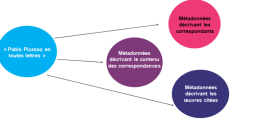 Pablo Picasso en toutes lettresTout en mettant en lumière la contribution spécifique de Picasso, cette recherche vise à circonscrire ce qui fut probablement l’un des réseaux les plus étendus de l’époque de façon et à réévaluer le rôle de ceux qui ont entouré l’artiste ainsi que leur impact sur la circulation de ses idées à travers le monde et sur les dynamiques culturelles, politiques et sociales de la période. L’approche proposée à cette fin repose sur l’analyse exhaustive de la correspondance qui a été adressée à l’artiste entre 1900 et 1972.
Pablo Picasso en toutes lettresTout en mettant en lumière la contribution spécifique de Picasso, cette recherche vise à circonscrire ce qui fut probablement l’un des réseaux les plus étendus de l’époque de façon et à réévaluer le rôle de ceux qui ont entouré l’artiste ainsi que leur impact sur la circulation de ses idées à travers le monde et sur les dynamiques culturelles, politiques et sociales de la période. L’approche proposée à cette fin repose sur l’analyse exhaustive de la correspondance qui a été adressée à l’artiste entre 1900 et 1972. Alone, in Front of the Mirror. Absences in Picasso’s StudioFor Picasso, the 1920s and 1930s are a period of intensified work on the subject of the painter and his model. The implication of the mirror in this intimate relationship changes the idiomatics of the studio. Being for Lacan an object of scopic contemplation of the self, the mirror becomes a crucial intermediary in the construction of one’s identity. Picasso uses, in fact, the reflective properties of the object to constitute the figure of the painter in the studio, while denying the possibility of its transformative reflection to his female model. While the act of creation becomes for the painter an act of identification, his model remains caught somewhere between a melancholic reverie and a vision of the duality of her being.
Alone, in Front of the Mirror. Absences in Picasso’s StudioFor Picasso, the 1920s and 1930s are a period of intensified work on the subject of the painter and his model. The implication of the mirror in this intimate relationship changes the idiomatics of the studio. Being for Lacan an object of scopic contemplation of the self, the mirror becomes a crucial intermediary in the construction of one’s identity. Picasso uses, in fact, the reflective properties of the object to constitute the figure of the painter in the studio, while denying the possibility of its transformative reflection to his female model. While the act of creation becomes for the painter an act of identification, his model remains caught somewhere between a melancholic reverie and a vision of the duality of her being.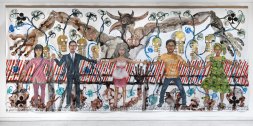 « Barthélémy Toguo / Pablo Picasso » Museu Picasso de BarceloneTout comme Picasso, Barthélémy Toguo est un artiste protéiforme dont l’œuvre se déploie dans de multiples directions. En fonction du projet artistique et de l’idée à développer, il choisit son médium : peinture, sculpture, céramique, performance, dessin, gravure, écriture. La représentation de la figure humaine, l’indistinction des genres, l’hybridation, la continuité entre humain, animal et végétal sont parmi ses sujets les plus familiers.
« Barthélémy Toguo / Pablo Picasso » Museu Picasso de BarceloneTout comme Picasso, Barthélémy Toguo est un artiste protéiforme dont l’œuvre se déploie dans de multiples directions. En fonction du projet artistique et de l’idée à développer, il choisit son médium : peinture, sculpture, céramique, performance, dessin, gravure, écriture. La représentation de la figure humaine, l’indistinction des genres, l’hybridation, la continuité entre humain, animal et végétal sont parmi ses sujets les plus familiers.
